Note
I love you artwork so much and it is always so detailed and interesting. I was also wondering if you do commissions?
Ahh thank you so much!! The internet is such a vast place and the thought that somehow some people end up seeing my things and like it is a happy thought ;w;
Yes I am certainly open to commissions!! You can find all info here: https://frederiquelucas.com/commission-information/ Take the prices for full paintings with a grain of salt, as it says in the text each project is unique and I'm always happy to try and find something fitting for someone's budget ♥
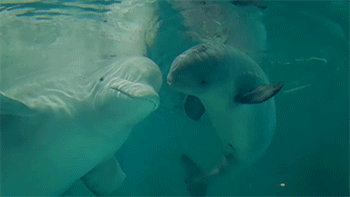
9 notes
·
View notes
Text

YES I’ve been chased and hissed at by a Canada goose but it doesn’t make me hate them guess I’m just built different
17K notes
·
View notes
Text
Urge These Resorts to Stop Offering Cruel Dolphin Experiences! | PETA
Hawks Cay Resort in Florida and The Kahala Hotel & Resort and Hilton Waikoloa Village in Hawaii are supporting the abuse of intelligent dolphins by partnering with notorious Dolphin Quest or Dolphin Connection. These companies cruelly confine dolphins to tiny lagoons so they can offer tourists “swim with dolphins” experiences for profit.
#namtalk#love me some naturalistic facilities#Dolphin Quest has always had a special look with being within a fort#lovely to hear they indeed have such great care and surroundings#habitats where the dolphins can entertain themselves are awesome#cetacean captivity#cetacean welfare#also yes i have been sharing a lot more text posts than usual#but the art is running low#and this is a topic that lies near and dear to my heart as well#so have ceta info dumps
688 notes
·
View notes
Note
In regards to the late-stage Bottlenose dolphin captures in the Gulf of Mexico: I've had the chance to speak to someone who actually worked there as a dolphin collector in the 80's. This is George Kieffer, who is a marine biologist with experience studying wild dolphins, as well as training them in various marine facilities. It was a fascinating and informative conversation, and really changed my opinion on how stressful capture has to be.
Of course there are capture methods that are undeniably stressful, think of the drive hunts in Japan. But the way these young Bottlenoses were captured in the Gulf seemed - to me - actually quite humane. It is more or less the same capture method that is still used on the dolphins in Sarasota Bay to this day, for research purposes.
To begin with there was a a very careful selection of which dolphins could be caught. Adults were off-limits because they have a status within the community. They are important members who rely on and are relied upon by others, and taking them out would leave a power vacuum. Babies of course cannot be taken either, if not for the cruelty then for the fact they still need to nurse.
Only the small pods of juveniles were targeted: they are basically on their own, not dependent upon anyone outside their group. They have left their mother and, although they would normally return to her (if female) or team up with a partner (if male), they are not missed by the rest of the community if they disappear, as crude as it sounds.
Once a small pod was located in waters shallow enough for humans to stand in comfortably, a very large net was laid out in a circle around them. At first the circle was so big the dolphins didn't even notice they had been trapped, and they simply continued on their way. Slowly the net was pulled in, making the circle tighter and tighter. However, even when it became clear the dolphins had nowhere to go, they remained calm.
Unlike trapping methods of the 60s, which relied on the dolphins panicking and entangling themselves in the nets, humans now entered into the netted circle to prevent exactly that. And then they just waited for the dolphins to approach. Because no matter how alien the whole experience, the young dolphins were so curious that they voluntarily swim up to the humans. When close enough, the dolphin would be grabbed and brought onto the boat. There they were put on a foam mat and kept moist until the others were collected too. Again, throughout all this, the dolphins remained completely calm. If they freaked out, started breathing too fast or squirming too much, they would simply be released back into the wild and not captured again. However this was very rarely the case, as far as George had experienced. Usually the dolphins vocalised a bit while they were on the boat alone, but as soon as they were joined by another dolphin they quickly calmed down.
What surprised me most however, was to hear how the dolphins were utterly untraumatised by the capture. In fact, some seemed to consider it a game! When George collected dolphins for USA marine parks he sometimes had to return an animal who was considered "too ugly" for display: i.e. with a tattered dorsal fin or a big scar. He'd often come across the same individual again on later capture runs, but rather than turning and swimming away, they would let themselves be captured all over again without a fuss. Some dolphins he captured five or six times and they'd still be as calm as the day they first saw humans on the boat.
After the dolphins were taken to the holding facility to acclimate, they would be closely monitored. They needed to adapt to taking dead fish, and this is an important milestone. If they refused to eat after three days, or were freaking out, these dolphins too would be returned to the wild - exactly to the spot where they were captured, so they would have no trouble finding their way around.
Now, I am still against the collection of new dolphins from the wild - mostly because there is no need. But if collection were to take place, this honestly does not feel like such a bad way, at least from a welfare perspective. The wild dolphins left behind do not suffer from the absence of the individuals taken, the captured dolphins are stress-free and basically choose to live their life in captivity and work with people, and if they do freak out anywhere along the line, they can simply go back home.
It was really interesting for me to learn all this. Wild capture was one of those things I just automatically held for 'bad', but this offered a different perspective. Again, still morally objectionable, but from a welfare perspective... not that bad.
Are dolphins still being captured for aquariums/parks and is it ethical (or complicated?)
Thanks for the ask! Yes, captures unfortunately do still occur in unregulated countries, though far less frequently than in the past. One of the most infamous examples is the annual dolphin drive in Taiji, Japan. While the main purpose of this hunt is to kill animals for meat, a small number of young, attractive dolphins are kept alive each year for sale. Nowadays, only unaccredited institutions purchase these dolphins, and even the Japanese Association of Zoos and Aquariums now prohibits its members from acquiring captured dolphins. Although Taiji is the most well-known, the majority of cetaceans captured from the wild in the 2000s/2010s came from Russia, which recently prohibited the practice.
Western parks and aquariums have not purchased wild-captured cetaceans in decades. The last captures in US waters occurred in 1989, and the last foreign imports were in the early 1990s (long before widespread public sentiment turned against dolphinariums). I do not believe the practice was ethical, and almost all my colleagues would agree with me. Some of them were indeed brutal affairs, such as the infamous Penn Cove captures, in which several young Southern Resident killer whales (including the famous Tokitae) were taken. Multiple animals were inadvertently killed, and the hunters clumsily attempted to hide the deaths by stuffing the whales’ corpses with rocks. The bodies resurfaced, and following public backlash orca captures were no longer performed in the US.
As awareness of animal welfare grew amongst scientists and the general public in the 70s and 80s, collections of smaller cetacean species became considerably less vicious. They were typically supervised by a veterinarian, and care was taken to ensure animals were not physically harmed. However, these were still undeniably stressful to the animals.
I’m glad the practice stopped. Dolphins are not endangered, and I don’t think we can justify the trauma of removing healthy young animals from their pods. Of course, I make exceptions for individuals that are ill, injured, or a danger to themselves or humans (like Clearwater Marine Aquarium’s Izzy)—and these situations are never taken lightly. And if a species ever became endangered (highly unlikely for bottlenose, but a possibility for belugas), that would also be cause for reevaluation.
Dolphins do quite well in modern accredited aquariums. In the United States, all managed dolphins were either born in human care or have been out of the wild for over 30 years (excluding non-releasable rescues). While there are valid concerns about cetacean captivity, ongoing wild capture is not one of them.
#namtalk#my time in Curacao was brief#but I learned so so much#and talking to George about the dolphins was definitely one of the highlights#that man has so many stories to tell#cetacean welfare#cetacean captivity
151 notes
·
View notes
Note
In reference to the tags of my previous post, here's some photos of "Bob" the baby killer whale that came before Toa.
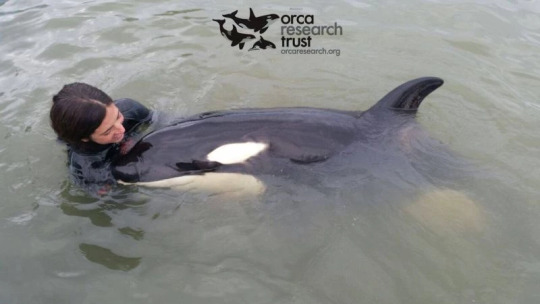

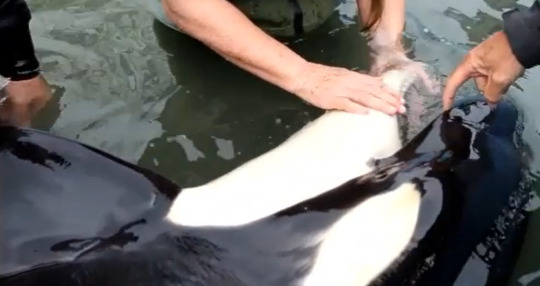

Literally the same story. People desperate for their few minutes of fame, and private coddle time with a killer whale, while ignoring their actual needs and medical condition. All the while villainizing the people who know how to actually take care of a (baby) whale.
Please share all you can about Toa the orca calf, I think his story is very important. I don’t know too much but it seems like a case of activists being but in charge rather than actual experts.
Yeah it was a mess from start to finish. Toa was found stranded on the rocks, with witnesses saying the waves had thrown him up there. Already he would have been distressed and had been on his side on a hard surface for a few hours at least.
They got him back in the water and then videos of these interactions started to surface:
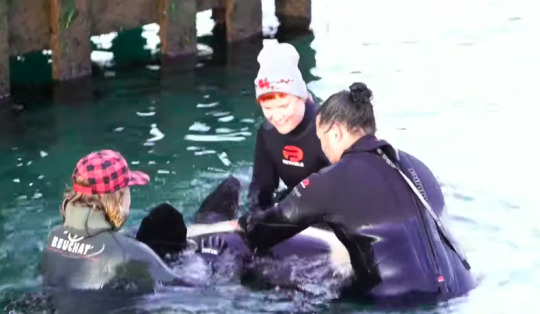
No PPE, giving Toa belly rubs and ignoring any formal rescue protocols (if you're trying to refloat a whale, you're not letting them turn upside down)
The sun was going down and DOC wanted people out of the water. Ingrid was on her way and giving instructions to her team. The decision was made to put Toa on a trailer overnight - it's unclear if that was her decision or not but it's clear that, despite not having any rehab facilities in New Zealand, people were determined to rehab this calf and release it back into the wild at any cost.
So they cobbled together a "sea pen" on a boat ramp in a dirty harbour. This is where Toa would eventually die in a few weeks time. Whale Rescue was already selling the story of a miraculous rescue and the plan to "reunite" Toa with his pod. And lying openly that orca calves had been successfully released in the wild before:
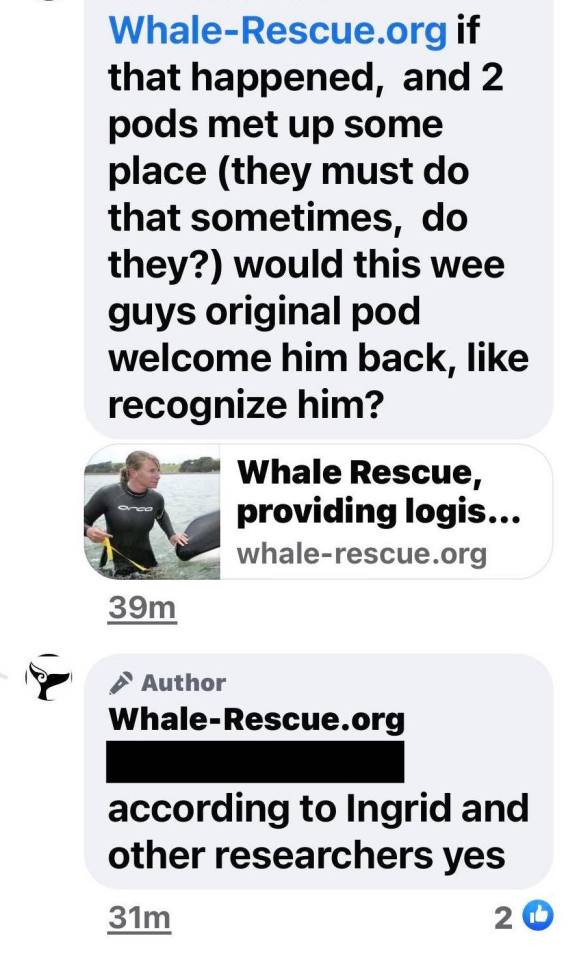
He wasn't injured, they said. He was fine. They just had to find his pod now.
When asked reasonable question about where the PPE was for volunteers, Whale Rescue immediately became defensive:
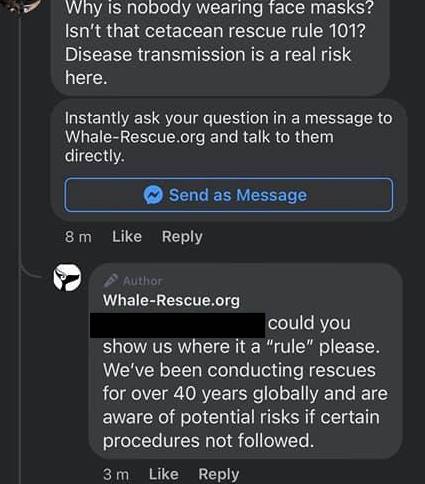
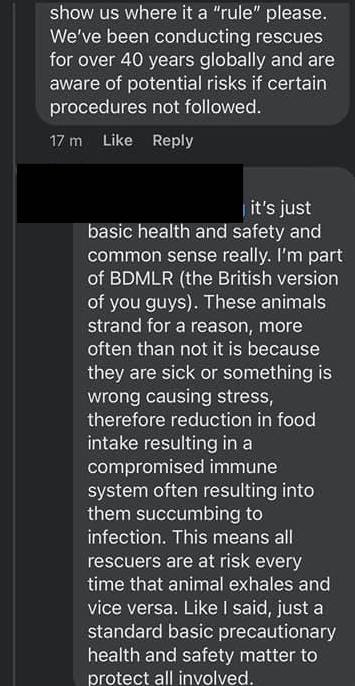
The call for PPE went ignored for about a day while people were in close contact with a sick orca. And the call went out for more "volunteers" aka anyone with a wetsuit. This sparked immediate concerns from the Advisory Group.
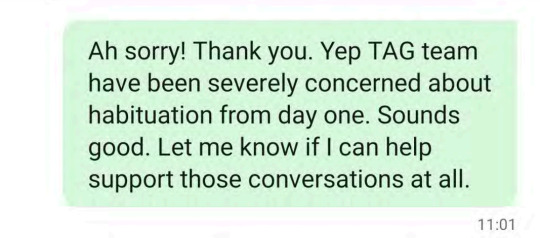

Photos like this started showing up - 6 people crowding Toa in a circle, no where for him to go if he wanted a break from people:
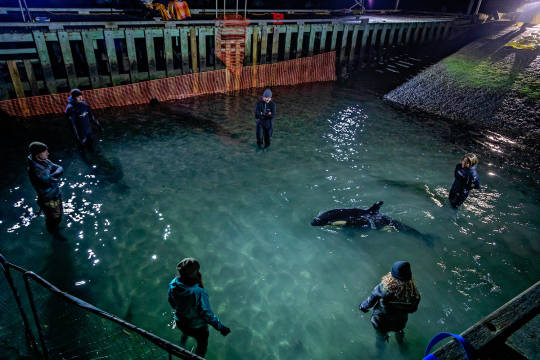
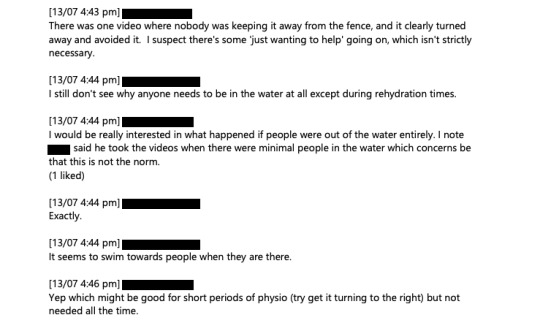
The excuse was that Toa needed help swimming. Yet he was swimming okay and avoiding the fences without any obvious issue. And so the habituation began... Despite continuing advice from the Technical Advisory Group - including Loro Parque and SeaWorld, who both have extensive calf raising experience.
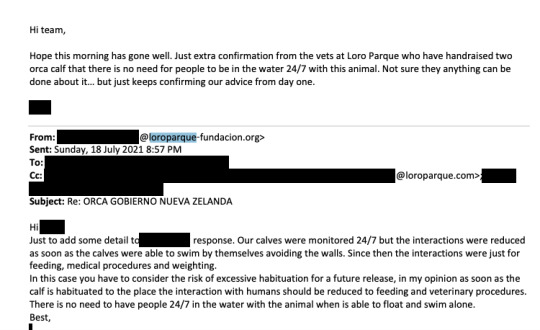
"There is no need to have people 24/7 in the water when the animal is able to float and swim alone."
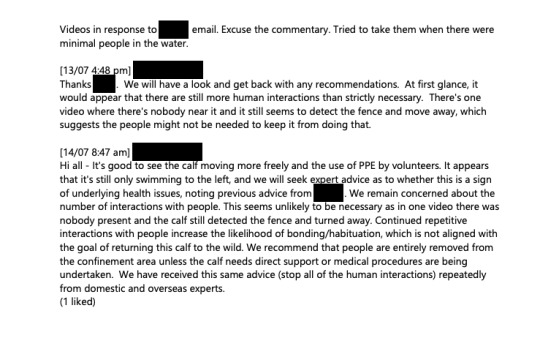
Finally PPE was being used but the habituation and intense contact with Toa continued. Ingrid gave it the okay and other inexperienced members of the public continued to encourage it.

Whale Rescue continued to affirm to the public that they are merely "duplicating natural behaviour" for Toa
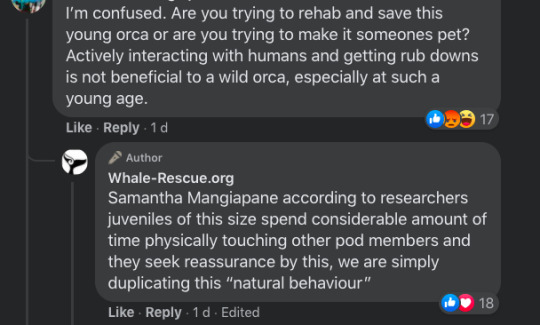

And the cultish and unquestioning worship of Ingrid Visser allowed this to continue - note the amount of people in the water for Toa's "massage." They only started wearing PPE when people started questioning it.
If you're wondering what I mean by cultish behaviour see the comment thread below:

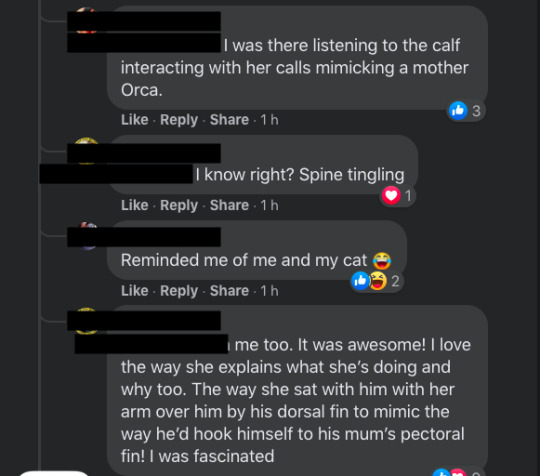
They actually believe that Ingrid was communicating with Toa. Because that's what she told them she was doing. And they believed it without question.
When Toa was moved into the freshwater pool due to storms, it got even worse.
This photo was quickly deleted but look how absolutely foul the water is:
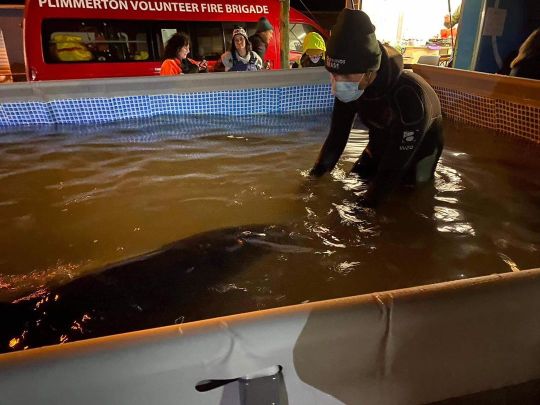
There didn't appear to be any sort of filtration or pump system.
At this point volunteers and Ingrid were being fed by donated food from the local pubs, Ingrid was sleeping on site in a donated campervan and the entire community were rallying around trying to "help." Note how close they're all set up to the pool.
Putting him in the pool also made Toa a lot more accessible. Concerns were raised about the stress to the calf and an exclusion zone was agreed upon. Buuut it was immediately disregarded.

7 people! In that tiny pool! And the photos of the complete flouting of the rules continued to surface.
The comments find it all very amusing!


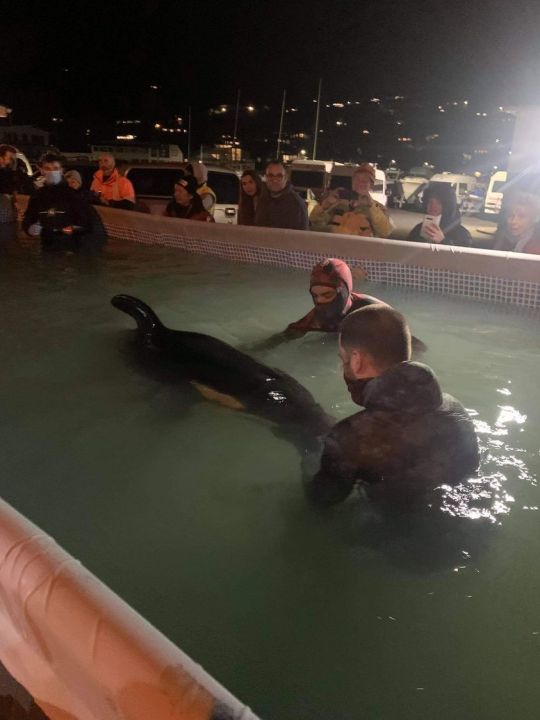
Roll up, roll up! Come and see the dying baby orca calf!
And then, as we near the end of this animal's torment, Ingrid brags to the press about how she's now TRAINING the animal she intends to release into the wild. Because we definitely want to be training cooperative care and making life saving feeding and hydrating procedures all about Choice.

Remember when Ingrid Visser didn't like the "exploitation" of orcas in captivity? Remember when she said that training "tricks", even husbandry behaviours, is cruel and bad? I do!
It makes me seriously wonder if she just wanted to be an orca trainer all her life.
But anyway, Toa's getting bouts of colic (gee, maybe changing the formula without permission wasn't a good idea!) and DOC is starting to get concerned about him. At this point, people are still denying that SeaWorld and Loro Parque are involved and any mention of a facility getting involved is immediately shut down.
This is what was being said in the Advisory Group:

At this point both SeaWorld and Loro Parque have provided formulas, advice ect. Ingrid Visser was claiming she knew these things all along and that the formulas were from her hand picked experts.
So these are what the comments were:
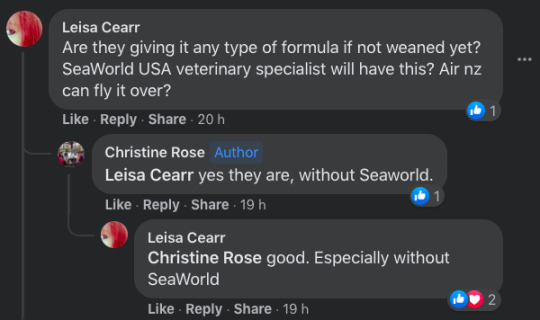
Whale Rescue thought it was appropriate to reply to comments of concern like this:

The cult of Visser continues to fuel the anti human care sentiment.
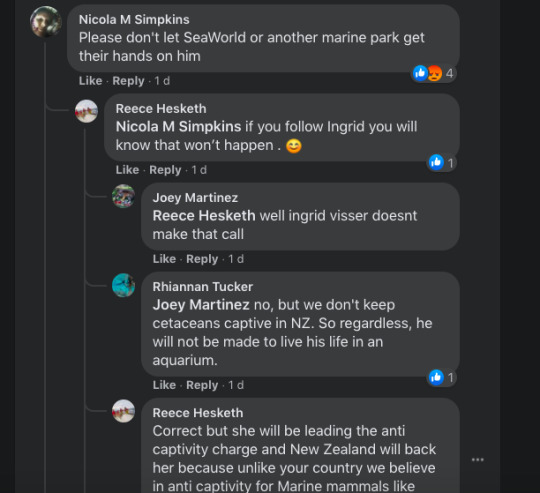
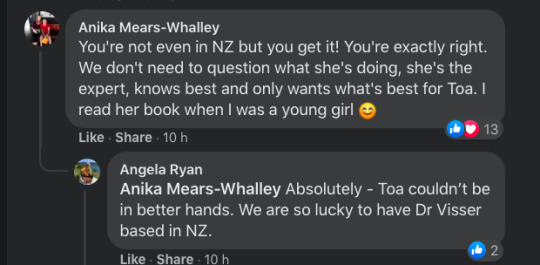
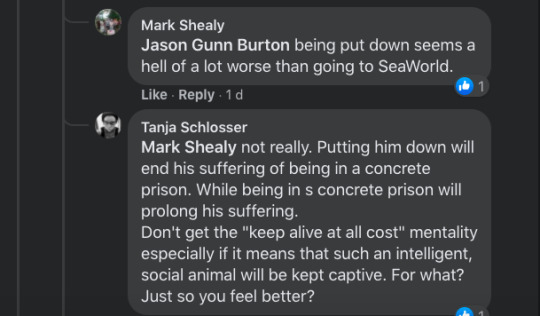
DOC starts to report concerns with Toa's health and Whale Rescue decides to double down that everything is completely Fine. Don't listen to DOC, keep giving us money.
The donations are getting up to 20k.
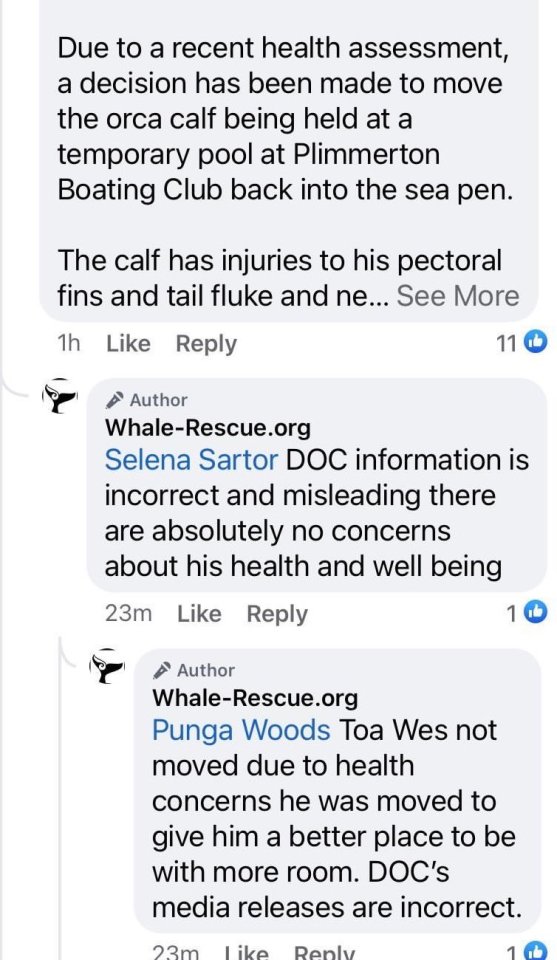

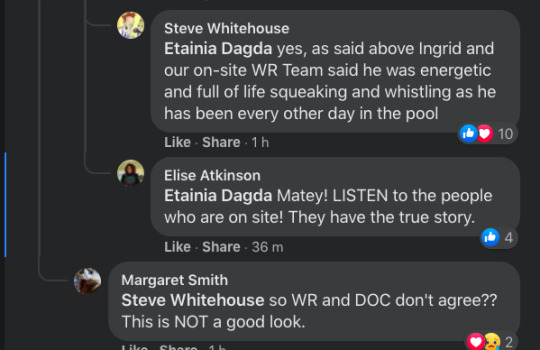
Because of Whale Rescue casting dispersions, anti DOC (Department of Conservation - who put in about 10k into the rescue efforts) sentiments grow.
And, only a few days later, Toa dies. I reached the end of my image limit but I still have plenty more screenshots I can share.
I recommend you check out the documents released by DOC to see the sources of these screenshots - the other screenshots were taken from news reports, Facebook groups and posts as well as videos:
#namtalk#Toa#part 2#killer whale#orca#cetacean captivity#cetacean welfare#cetacean rescue#cetacean rehab
664 notes
·
View notes
Text
Any time I see someone worshipping Ingrid Visser I remember the time her organisation, under her advice, kept an orca calf on a mattress in a horse trailer overnight because they wanted to “rehabilitate” him/put him in a makeshift sea pen to treat like a pool toy until he died.

I remember when videos showed up of newly named Toa vocalising (usually a sign of stress) and her cooing and making nonsense noises at him. And the comments were like “she’s talking to him!!!”
Ingrid also insisted of making Toa interact with people despite him being a very sick baby orca who was slowly dying.
This was later confirmed by people who were there:

I remember when untrained volunteers were crowding this stressed sick orca calf, bragging about swimming with him and bonding with him and ignoring advice to stop habituating him.
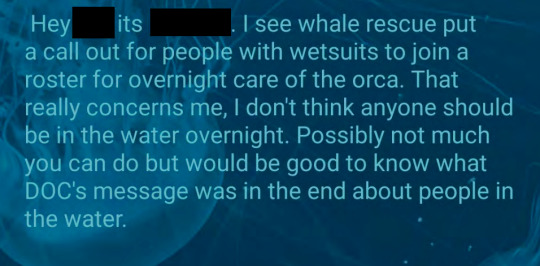

They had young kids in with him that didn’t know better and were told by Ingrid to interact with him like this. They were also laughing about how he “snored.” (Cetaceans don’t snore - anything that sounds like snoring is respiratory distress).
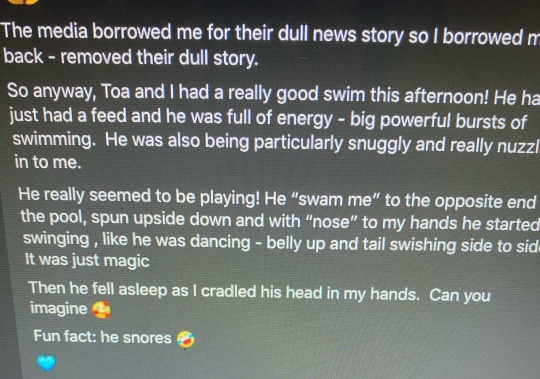
(Funny how waterwork is only okay when they do it with the stressed and dying orca calf but not in SeaWorld.)
The pathetic attempt to rehabilitate this dying calf by treating him like a pet, putting him in a tub of freshwater that quickly became toxic with ammonia. Signing off feeds with belly rubs and formulas changed behind the backs of the actual experts from Wellington Zoo and the experts consulted overseas who actually have successfully rehabbed calves.

How Whale Rescue (Ingrid’s organisation) lied again and again about Toa’s health and chances to be rehabilitated and released. How they misrepresented information about habituation when rehabbing whales and how Ingrid wanted to “train” Toa, despite plans to release him. How they demonised SeaWorld and claimed they weren’t involved despite records showing that SeaWorld and Loro Parque vets had provided their formula recipes and calf rearing protocols.


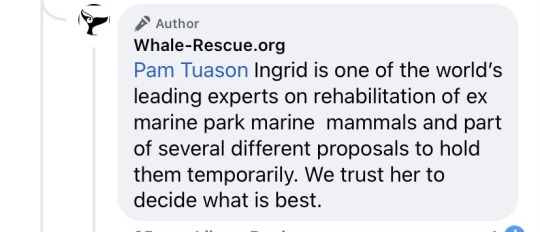
None of this is true - Ingrid has never rehabilitated any whale from a marine park. All the information she was getting was from DOC and the advisory group team

I could go on but I hit my image limit.
Basically: Ingrid’s “expertise” misled the New Zealand public, bullying out the actual experts so she could play orca trainer with her new pet.
#namtalk#Toa#part 1#honestly this was such a shitshow#and it has happened before#in 2016 another killer whale calf in New Zealand was in trouble#named Bob or Tama Tiger#and it was equally bad#if you look up pictures#you will see Ingrid Visser also coddling him in a dirty swimming pool#and photos of countless volunteers coddling with him and huddling around the pool edge#he also died within a few days#I was honestly mistaking the two cases because they are so similar#and it is frankly awful that the same thing has happened twice#with the same people#at the time I was with the dolphin trainers in Curacao#and each day they'd come share the updates - aghast at that they've put him in a gross little pool now - they're SWIMMING with him#until - unsurprisingly - he passed away#Ingrid Visser may be a scientist#but that does not make you qualified#as your word gospel#cetacean captivity#cetacean rescue#cetacean rehabilitation#killer whale#orca
159 notes
·
View notes
Text

Leatherback sea turtle (Dermochelys coriacea)
And here's the last of the illustrations made for the UK bycatch project. Not my usual subject and yet an old friend, as I had previously illustrated a Leatherback for the Marine Animal Response Society. Like last time I had a lot of fun with this one, especially the white markings. They are a beautiful and willing subject.
These are the very biggest of the turtles, growing to a whopping 2.7 metres in length and weighing over half a ton, though most are significantly smaller. Highly recommend looking up photos of them next to humans to get a sense of their size. Also internet famous for their impressively spiked throat, which helps keep jellyfish (their prey) from flowing back outside once caught.
#illustrations#scientific illustration#Leatherback sea turtle#Leatherback turtle#Leatherback#turtle#sea turtle#Dermochelys coriacea#digital art
60 notes
·
View notes
Text

Those other marine mammals
For the UK bycatch project, I also had to illustrate some other species than the cetaceans I am so familiar with. Animals with legs and fur and nails... foreign concepts for sure. Jokes aside, it's always a challenge to illustrate a species you don't really know. I always wonder whether a seal or otter scientist would also approve of these, or if mistakes would immediately jump out to them (like they do for me with cetacean illustrations).
I don't really like how the harbour seal turned out, it looks too much like a stuffed animal to me. And the grey seal was a challenge because frankly, those males in real life look like weird muppets. So when drawing you're constantly torn between "does it look weird because I'm messing up or because I'm doing well?" haha. In the end I'm happy with it though! And the otter I'm very fond of. Such keen eyed creatures, I hope to see one in the wild some day.
#illustrations#scientific illustration#Eurasian otter#European otter#common otter#otter#Lutra lutra#Grey seal#Gray seal#seal#Halichoerus gryphus#Harbour seal#Harbor seal#Phoca vitulina#digital art
115 notes
·
View notes
Text

White-beaked dolphin (Lagenorhynchus albirostris)
My friends! Behold! A new friend!!! After more than a year (no joke) without a proper commission, I had a lovely new project to work on these past weeks.
It's for Mindfully Wired Communications, a company in the UK that translates scientific information to the general public through all sorts of means. They're currently collaborating on a project to reduce bycatch in UK fisheries, and part of that is creating an ID guide for the fishermen of animals they might encounter at sea. Really important work which I'm happy to contribute to.
Most of the illustrations they needed I already had lying around. But a few had to be made anew, one of which this handsome fellow, the White-beaked dolphin! Markings wise, they are one of my favourite species of dolphin. I love the way everything on their body just flows. Also they have great whopping dorsal- and pectoral fins, and, irony of ironies, often black-marked beaks as adults.
For some reason it was quite a struggle to make him look right, but in the end I'm happy with the result. I hope you like it too, and the other friends will follow soon!
#illustrations#scientific illustration#White-beaked dolphin#dolphin#Lagenorhynchus albirostris#Lagenorhynchus#toothed whale#cetacean
54 notes
·
View notes
Text
Ok i have to know
Reblog for sample size!
(Other can also include porpoises and i guess dolphins but yanno)
#namtalk#Strap-toothed whale my beloved#and the Shepherd's beaked whale#and Ramari's#they have so many good ones#but ok killer whale#beluga#and narwhal are high up there too#and false killer whale#THERE'S SO MANY GOOD ONES
1K notes
·
View notes
Text
As someone who learned to ride a horse before they learned to ride a bike and who still has clocked way more hours on a horse than a bicycle (even though I mostly stopped riding ten years ago), it is sometimes difficult for me to regard a bike purely as a machine. Even after you get past the differences in stance and muscle usage between bike riding and horse riding, there are some riding habits that are difficult to break:
Signalling to the bike that you are turning by turning your head in the direction you intend to go (I have been told I also do this when driving a car)
Standing up in the saddle whenever you go over a speed bump
Counting down from three before you go over an obstacle even though your bike doesn't have legs and therefore doesn't have a stride
Sitting down and leaning back when you use the brakes so as not to give your bike mixed signals
Feeling discombobulated when walking or standing on the right side of your bike
Patting the head tube of your bike to reassure it that it did a good job going up that hill
#namtalk#i love this so much#also definite YES to standing up when going over a speed bump#I don't ride my bike as much as I used to#but rest assured my cars have solidly claimed their spot as alternative horse/pet in my life
17K notes
·
View notes
Text


I haven’t been able to get the full video but we just celebrated one of our steam locomotives turning 145 by chucking a chocolate cake into her firebox
#namtalk#i can only condone this wholeheartedly#i hope she had an amazing 145th birthday#wish we could do this with our locomotives#but i don't think my colleagues would take well to it#though they regularly get left over pizzas as a tasty treat#steam locomotive#train
328K notes
·
View notes
Photo
Ok I had this post saved for years in my drafts but finally getting round to it. Because: this photo is fake and it is fucking funny to me. The photos themselves are real, of course, but the dolphin has been photoshopped into the background. And the dolphin is captive as well. So no “PhotoKarma” or an incredible moment captured by shaking hands. But a carefully crafted picture used for internet fame. Bad photographer.
The reason I know this is fake, and it is quite humorous, is that while this dolphin is an Atlantic coastal Common bottlenose dolphin, it isn’t a Bahamian Atlantic coastal Common bottlenose dolphin. It’s a Floridian.
Floridian bottlenose dolphins are basically the ‘perfect’ and archetypal bottlenose. Slate grey, handsome faces, lovely clear markings. Coincidentally these are also the dolphins you’ll find most in marine parks in the Western world, because captures mostly took place in the Gulf of Mexico and as such they have become the face of dolphins everywhere.
Bahamian bottlenoses are softer marked, with most notably strangely square, boxy melons. Also their eyestripes never quite make it to the tip of their melon, it almost always veers up some 1/3rd of the way.

Yes, I even made a comparison image. Like this is quite clear to see by the rounded melon, clear cut markings and eyestripe reaching all the way to the tippy tip of the melon, that the dolphin in the photo is definitely a (descendant of a) Floridian dolphin. Also you can see the stadium reflected on their skin.
Thanks for coming to my TED talk about how knowing idiotically detailed things about variation in bottlenose dolphin morphology will help you sniff out fake content creators on the internet (like, once in 5-13 years).

Pam Wood:
I was out on a dive excursion in the Bahamas and the boat came to a stop and suddenly this dolphin just popped up from the water as if to say “Hi, welcome to the Bahamas”. I quickly picked up my Canon 5d camera with my shaking hands and was rewarded with this image. I refer to this as “PhotoKarma”.
#namtalk#bottlenose dolphin#common bottlenose dolphin#also i am SO SORRY to all the photographers whose photos i used in this comparison pic#i made it 4 years ago and can't for the life of me remember where i sourced the photos from#if you recognise your picture please let me know I will credit you (or remove it if you wish)#i am not normally like this with copyright
9K notes
·
View notes
Photo
I love these photos of out-of-place humans taking pictures with locomotives like they're catching a selfie with a celebrity they just happened to stumble upon in a diner. Crew taking care of her as usual cause to them it's a day as any other.
They kind of are like celebrities, if you think about it.
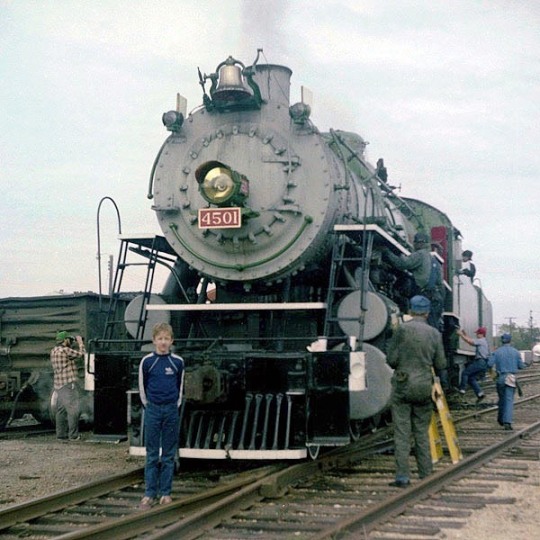
Credit belongs to hawkinsrails.net!
‘Final angle of 4501 in the yard.’
Hattiesburg, Ms / Nov 1984 / JCH
#southernrailway
#southernservesthesouth
#givesagreenlighttoinnovations
#southern4501steamlocomotive
#southern4501
#sou4501
#hattiesburgmississippi
#november
#1984
#rwh
@tenn_valley_rr
@norfolksouthern (at Hattiesburg, Mississippi)
https://www.instagram.com/p/CfeKbHIrTw3/?igshid=NGJjMDIxMWI=
35 notes
·
View notes
Text

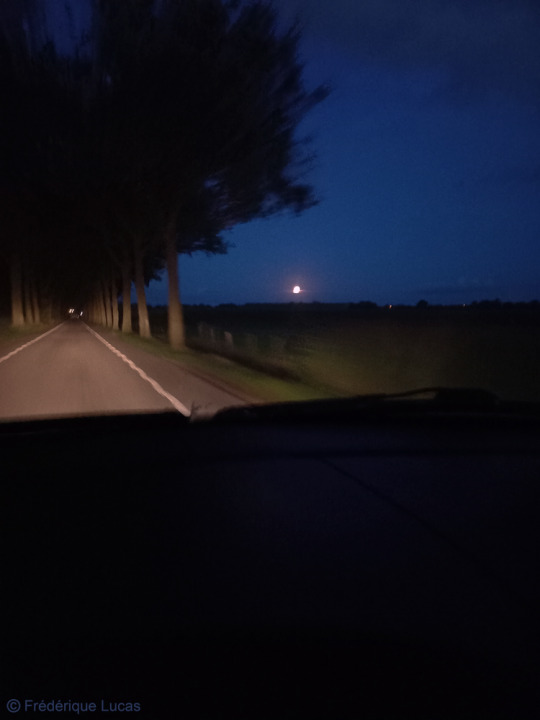
ain't that the goddamn truth

#bonus points for a soft warm breeze#and that smell of summer on the air#and the faint rustle of the grass and the crickets singing their shrill song#when the nights are warm enough to drive with the top down#so i can look at the stars#can't wait for summer#hey i've been having some Feelings about my cars can you tell#namtalk
2K notes
·
View notes
Text
I must admit that my first reaction to seeing that footage of Nakhod was adverse too. But local-hellhound's explanation makes a lot more sense. And frankly, if we were to see a tense looking human slam their fist on a table, your first thought probably wouldn't be "Omg they're trying to maim their hand!" but rather something along the lines of "Wowza they're pissed off."
Also, no one knows these animals better than the people who work with them every single day of every single week. Animals too can have idiosyncrasies, moods, weird behaviours that seem alarming but are just part of who they are. Think critically, and realize that no 20 second video can capture everything that is going on.
youtube
A really great look at the new Chimelong orca exhibit in China. Honestly makes me sad that SeaWorld will never be at this level - this is next level, modern cetacean exhibit design.
The emphasis on education about whales from the moment you walk in is fantastic - and then from there you come out to those massive underwater viewing areas.
In this area there seems to be underwater bubbles for enrichment, plus the wave machine. The habitats are massive, though I would love to see more enrichment here. While it does appear barren, the addition of the dynamic waves and bubbles does add an extra dimension.
It’s also important to remember that rocks and naturalistic additions may look pretty and be used by the whales for rubbing. However it does create more risk of injury during high energy play. It looks like the bubble jets could be filling the rubbing need without risk of environmental scrapes.
The population of orcas looks to be very stable, with a new calf born at the beginning of the month in the new environment. While a lot of people get upset at the idea of breeding, a healthy breeding population takes away any need for wild capture. China and Japan are both planning more facilities with orcas - it’s important that they at least don’t take more orcas from the wild.
Overall, while I don’t support the fact that these orcas were wild captured, I can appreciate the thought that has gone into making an educational and enriching habitat for these animals.
108 notes
·
View notes
Text
You bet! What kind of Saab do you own? I'm currently proud owner of three 9-3's. Cheers back across the internet!
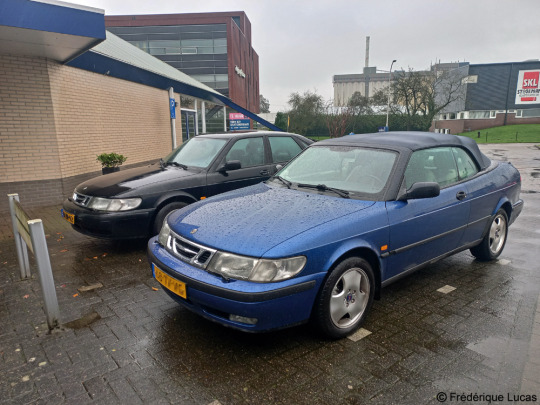
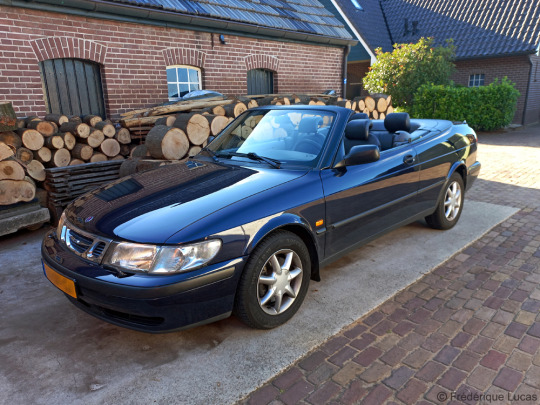
Today Blue Sheep turns 24. It's funny, a few years ago I couldn't imagine even wanting to drive a car, let alone enjoying it. Now, this lovely old Saab means so much to me, and I couldn't imagine going without. Driving with the top down on these warm summer days brings me so much joy. And being able to improve and repair her with my own hands gives a sort of intimate satisfaction. Over 1,5 years and almost 25,000 kms together now. I hope for many more.
Happy birthday you beautiful machine.pho

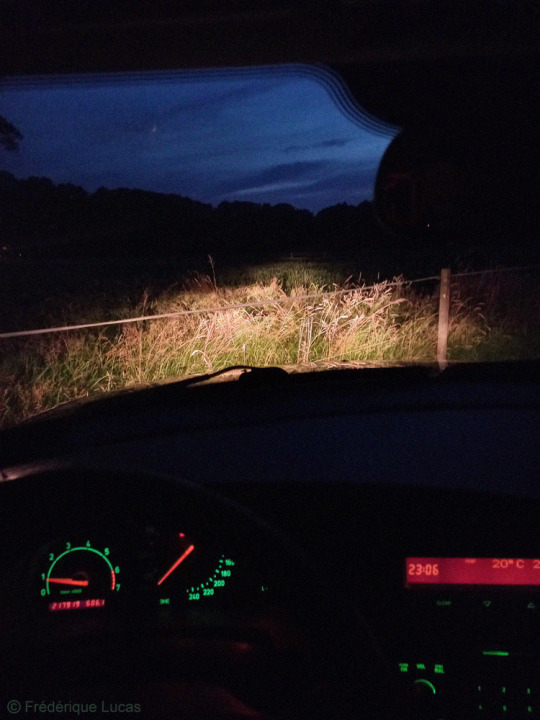
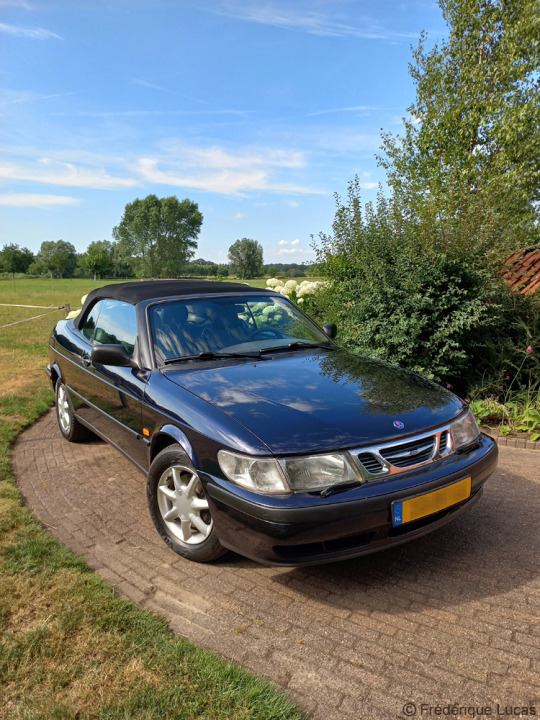
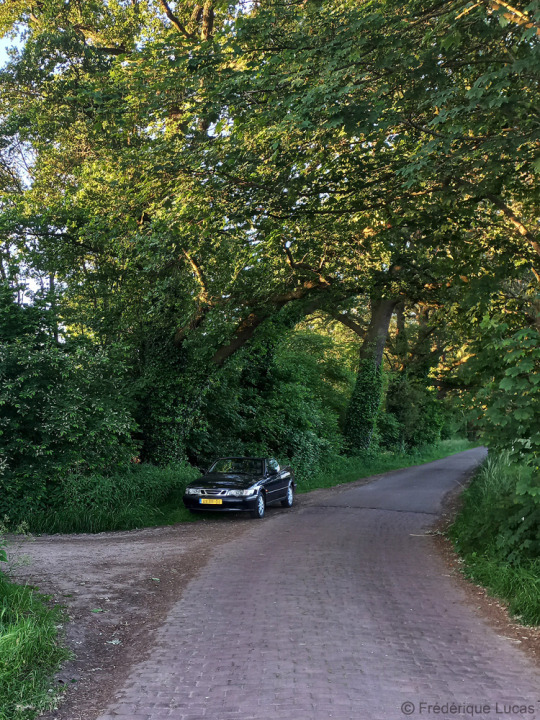

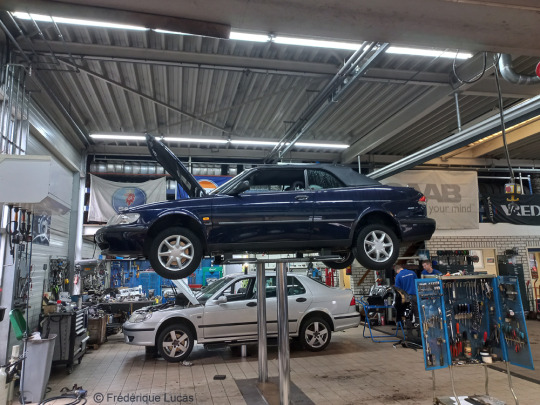


#there's Kingfisher the convertible with my newest addition#she's currently nicknamed Dusty cause she's a real barnfind#and gross as heck#but we'll get her sparkly again!#and then she'll get a Real Name#which she totally deserves cause she'd been sitting for TEN YEARS#but ladies and gentlemen.. she drives#with frighteningly little problems#tough ole cars#anyway I LOVE MY CARS OK#apologies for the Saab spam for all you dolphin purists here#i'm still working on drawing i promise#namtalk
47 notes
·
View notes